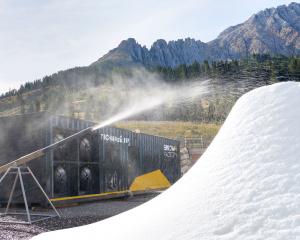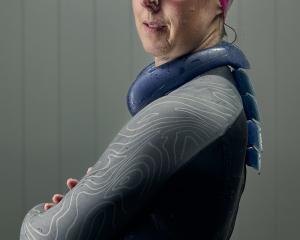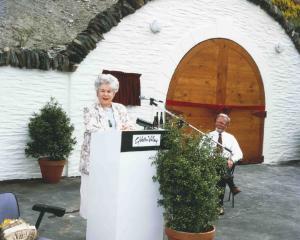Helmet removal could be added to hang-glider and paraglider pilot first aid training, following the release of formal written findings into the death of a Wanaka speed wing flier last year.
Sean Nicholas Kerridge (40), an electrical inspector, of Wanaka, was killed after he crashed at high speed while manoeuvring his speed wing close to the ground on the Treble Cone skifield access road on February 17, 2012.
At his inquest in Queenstown in August, three people who provided first aid at the scene raised concerns about the difficulty they had in removing Mr Kerridge's full-face helmet - described as fitting ''extremely snugly'', exacerbated by swelling.
While Mr Crerar found the helmet was not a contributing factor in his death and there was ''insufficient evidence'' on which to base a recommendation full-face helmets were ''less satisfactory'', he hoped publicity would prompt a review of the types of helmets recommended for speed wing fliers.
New Zealand Hang Gliding and Paragliding Association (NZH-GPA) president Evan Lamberton, of Auckland, told the Otago Daily Times yesterday full-face helmets were ''very common'' for speed wing fliers and it was unlikely the association would ever ''go away from those''.
''Any helmet, to work properly, has to be snug. The more protective a helmet is, the more likely it's going to be difficult to remove.''
If a helmet was not removed quickly, swelling aggravated the problem, Mr Lamberton said.
''Once a person's head starts to swell ... the helmet removal is always going to be difficult [but] certainly, as part of the first aid training all our pilots go through, helmet removal might be a worthwhile part of that.''
Mr Lamberton said the NZHGPA was conducting a review into speed wing flying, which would be carried out in conjunction with the Civil Aviation Authority.
While the association's rules ''weren't really brought into question'' by Mr Crerar's findings, ''we always like to see if we can do better''.
''We've been working on some [proposals] for speed wing flying probably for six months ... they are at a stage where we can take them to the CAA but whether ...
the CAA would accept them or not is a different matter.''
In his decision, Mr Crerar found although Mr Kerridge had been flying the speed wing, a Spitfire 11, in breach of its specifications and operating instructions, he could not find that contributed to his death.
Manufacturer's instructions for the Spitfire 11 stated it was designed for flying on skis and was ''not suitable for foot launch'' - Mr Kerridge had foot-launched.
Mr Crerar said his attention had been drawn to ''other possible breaches of the regulatory environment or gaps in a regulatory environment'', but was ''unable to connect any of these such perceived failures to the circumstances of the death ... and make no further comment or recommendation ... ''.
He found Mr Kerridge died after crashing into the ground at high speed while manoeuvring his speed wing close to the terrain, having launched from ''Pub Corner'', about three-quarters of the way up the Treble Cone skifield access road.
It was ''probable'' weather was a contributing factor, with the speed wing entering an area of descending air at a low level, giving little opportunity for Mr Kerridge to recover.
He died from a rupture of the thoracic aorta and a ''massive'' haemorrhage.
Mr Crerar paid particular tribute to paraglider Kat West, hang glider and paraglider Bryan Moore and paraglider Mal Haskins for assistance provided to Mr Kerridge at the scene.












